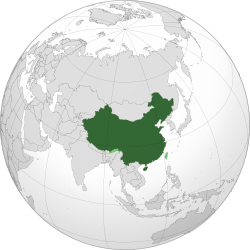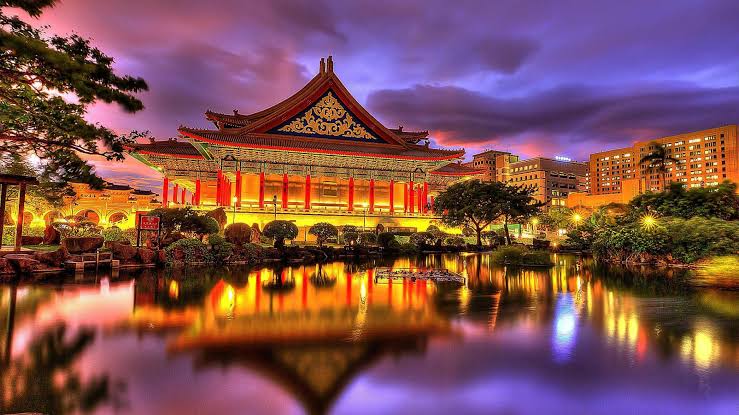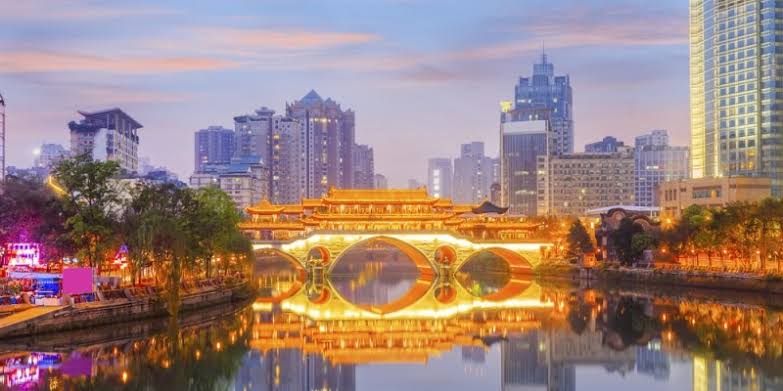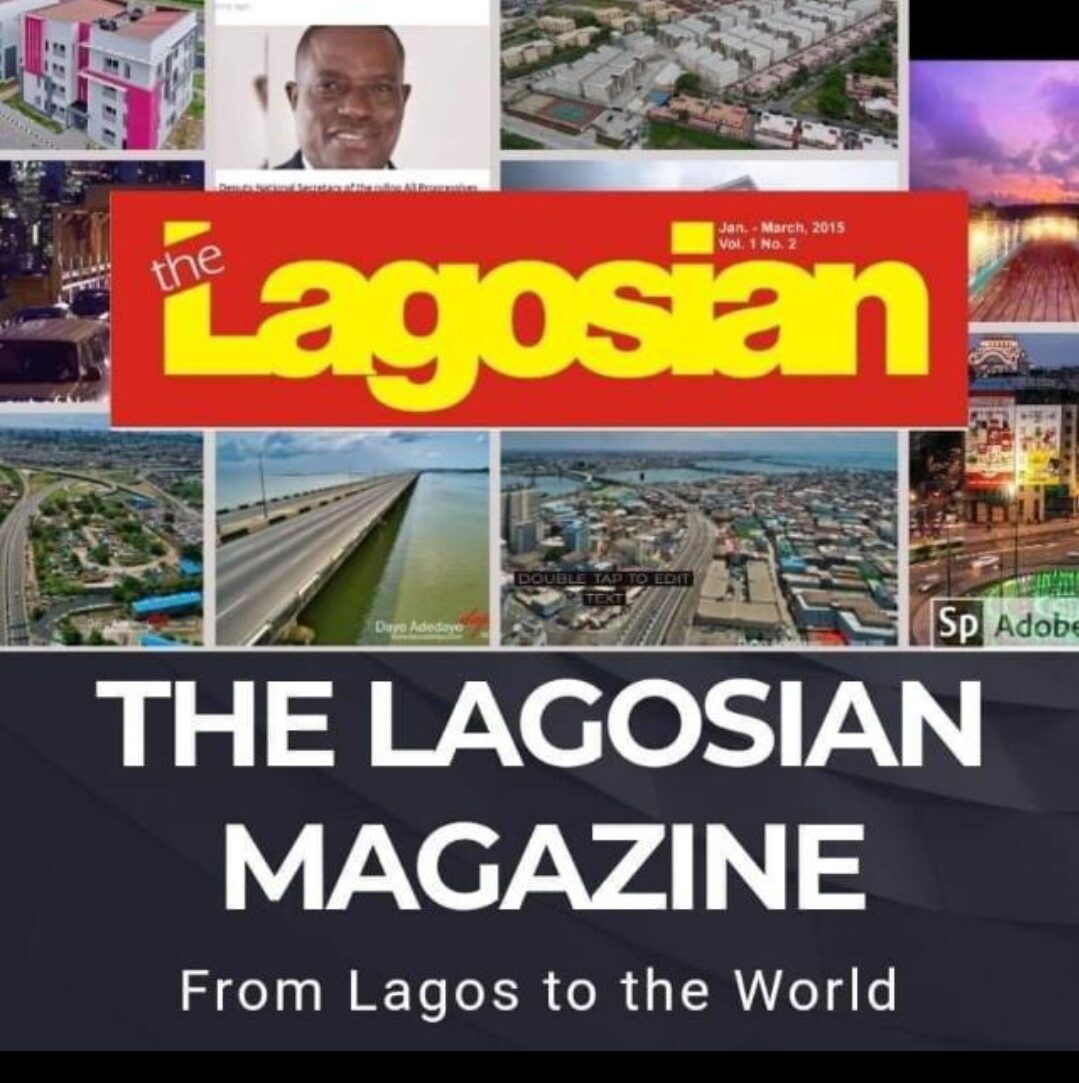The most populated country in the world will be aborting the quarantine struggles for international travelers.

Xu Qinduo-
China says it will cancel quarantine requirements for international travelers starting from January 8, 2023. Anyone who tests negative for COVID within 48 hours can now come to China without needing quarantine afterwards. Ready to visit?
Fact(s) about China
|
People’s Republic of China
|
|
|---|---|
| Anthem: 义勇军进行曲 Yìyǒngjūn Jìnxíngqǔ “March of the Volunteers” 0:44
|
|

Territory controlled by the People’s Republic of China shown in dark green; territory claimed but not controlled shown in light green
|
|
| Capital | Beijing 39°55′N 116°23′E |
| Largest city by population |
Shanghai |
| Official languages | Standard Chinese[a] |
| Recognized regional languages | |
| Official script | Simplified Chinese[b] |
| Ethnic groups
(2020)[1]
|
|
| Religion
(2020)[2]
|
|
| Demonym(s) | Chinese |
| Government | Unitary Marxist–Leninist one-party socialist republic |
| Xi Jinping | |
|
• Premier
|
Li Keqiang |
| Li Zhanshu | |
| Wang Yang | |
| Legislature | National People’s Congress |
| Formation | |
| c. 2070 BCE | |
| 221 BCE | |
| 1 January 1912 | |
| 1 October 1949 | |
| 20 September 1954 | |
| 4 December 1982 | |
| 20 December 1999 | |
| Area | |
|
• Total
|
9,596,961 km2 (3,705,407 sq mi)[g][5] (3rd / 4th) |
|
• Water (%)
|
2.8[h] |
| Population | |
|
• 2022 estimate
|
1,410,539,758[7] (1st) |
|
• 2020 census
|
|
|
• Density
|
145[9]/km2 (375.5/sq mi) (83rd) |
| GDP (PPP) | 2022 estimate |
|
• Total
|
|
|
• Per capita
|
|
| GDP (nominal) | 2022 estimate |
|
• Total
|
|
|
• Per capita
|
|
| Gini (2019) | medium |
| HDI (2021) | high · 79th |
| Currency | Renminbi (元/¥)[j] (CNY) |
| Time zone | UTC+8 (CST) |
| DST is not observed | |
| Date format |
|
| Driving side | right (Mainland) left (Hong Kong and Macau) |
| Calling code | +86 (Mainland) +852 (Hong Kong) +853 (Macau) |
| ISO 3166 code | CN |
| Internet TLD | |
Modern Chinese trace their origins to a cradle of civilization in the fertile basin of the Yellow River in the North China Plain. The semi-legendary Xia dynasty in the 21st century BCE and the well-attested Shang and Zhou dynasties developed a bureaucratic political system to serve hereditary monarchies, or dynasties. Chinese writing, Chinese classic literature, and the Hundred Schools of Thought emerged during this period and influenced China and its neighbors for centuries to come. In the third century BCE, Qin’s wars of unification created the first Chinese empire, the short-lived Qin dynasty. The Qin was followed by the more stable Han dynasty (206 BCE – 220 CE), which established a model for nearly two millennia in which the Chinese empire was one of the world’s foremost economic powers. The empire expanded, fractured and re-unified, was conquered and reestablished, absorbed foreign religions and ideas, and made world-leading scientific advances, such as the Four Great Inventions: gunpowder, paper, the compass, and printing. After centuries of disunion following the fall of the Han, the Sui (581–618) and Tang (618–907) dynasties reunified the empire. The multi-ethnic Tang welcomed foreign trade and culture that came over the Silk Road and adapted Buddhism to Chinese needs. The early modern Song dynasty (960–1279) became increasingly urban and commercial. The civilian scholar-official or literati used the examination system and the doctrines of Neo-Confucianism to replace the military aristocrats of earlier dynasties. The Mongol invasion established the Yuan dynasty in 1279, but the Ming dynasty (1368–1644) re-established Han Chinese control. The Manchu-led Qing dynasty nearly doubled the empire’s territory and established a multi-ethnic state that was the basis of the modern Chinese nation, but suffered heavy losses to foreign imperialism in the 19th century.
The Chinese monarchy collapsed in 1912 with the Xinhai Revolution, when the Republic of China (ROC) replaced the Qing dynasty. In its early years as a republic, the country underwent a period of instability known as the Warlord Era before mostly reunifying in 1928 under a Nationalist government. A civil war between the nationalist Kuomintang (KMT) and the Chinese Communist Party (CCP) began in 1927. Japan invaded China in 1937, starting the Second Sino-Japanese War and temporarily halting the civil war. The surrender and expulsion of Japanese forces from China in 1945 left a power vacuum in the country, which led to renewed fighting between the CCP and the Kuomintang. The civil war ended in 1949[o] with the division of Chinese territory; the CCP established the People’s Republic of China on the mainland while the Kuomintang-led ROC government retreated to the island of Taiwan.[p] Both claim to be the sole legitimate government of China, although the United Nations has recognized the PRC as the sole representation since 1971. From 1959 to 1961, the PRC implemented an economic and social campaign called the Great Leap Forward, that resulted in a sharp economic decline and an estimated 15 to 55 million deaths, mostly through man-made famine. From 1966 to 1976, the turbulent period of political and social chaos within China known as the Cultural Revolution led to greater economic and educational decline, with millions being purged or subjected to either persecution or politicide based on political categories. Since then, the Chinese government has rebuked some of the earlier Maoist policies, conducting a series of political and economic reforms since 1978, which has greatly raised Chinese standards of living, and increased life expectancies.
China is currently governed as a unitary Marxist–Leninist one-party socialist republic by the CCP. China is a permanent member of the United Nations Security Council and a founding member of several multilateral and regional cooperation organizations such as the Asian Infrastructure Investment Bank, the Silk Road Fund, the New Development Bank, the Shanghai Cooperation Organisation, and the RCEP, and is a member of the BRICS, the G8+5, the G20, the APEC, and the East Asia Summit. It ranks among the lowest in measurements of democracy, civil liberties, government transparency, freedom of the press, freedom of religion, and human rights of ethnic minorities. The Chinese authorities have been criticized by human rights activists and non-governmental organizations for human rights abuses, including political repression, mass censorship, mass surveillance of their citizens, and violent suppression of protest and dissent.
Making up around one-fifth of the world economy, China is the world’s largest economy by GDP by purchasing power parity, the second-largest economy by nominal GDP, and the second-wealthiest country. The country is one of the fastest growing major economies and is the world’s largest manufacturer and exporter, as well as the second-largest importer. China is a recognized nuclear-weapon state with the world’s largest standing army by military personnel and second-largest defense budget. China is considered to be a potential superpower due to its large markets, high innovation, economic potential, growing military strength, and influence in international affairs.










